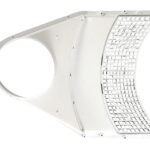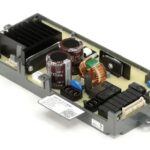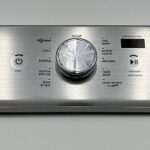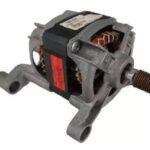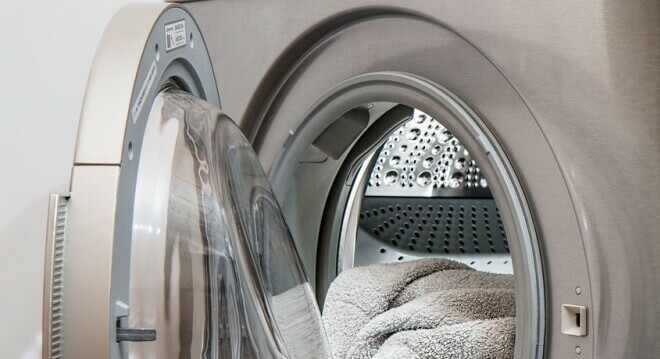
Your “Samsung washing machine” is smartly designed to take care of your laundry with minimal fuss. The spin cycle is key here – it’s that final, powerful whirl that helps your clothes come out less damp and drastically reduces drying time. When this nifty feature isn’t working, laundry day starts to look gloomy.
“Spin Cycle Solutions: Troubleshooting Tips for Your Samsung Washing Machine”
A smoothly functioning spin cycle is about more than just convenience. It’s essential in the process of efficiently cleaning your clothes by extracting excess water. Without it, you’re left with wet laundry and the possibility of odors, mildew, or extended drying times.
Spinning troubles can crop up for several reasons. Overloading is a usual suspect, but issues can also stem from mechanical faults like a misaligned drive belt or electrical snags – such as a malfunctioning lid switch. While some of these can be quickly remedied at home, others might demand a technician’s touch.
Familiarizing yourself with these basics paves the way for pinpointing the problem. Read on, and I’ll take you through some easy-to-follow troubleshooting steps that may restore harmony to your laundry routine without the need for a service call – quite yet.
Common Causes of Samsung Washing Machines Not Spinning
- Clogged drain filter.
- Faulty door latch.
- Unbalanced load.
- Broken drive belt.
- Malfunctioning motor.
- Defective lid switch.
- Overloaded machine.
- Electrical issues.
- Faulty control board.
- Worn-out bearings.
Initial Troubleshooting Steps
Before you call for help, there are several things you can do yourself to diagnose and potentially fix your Samsung washing machine when it’s not spinning. These initial steps are straightforward and can save you both time and money. Let’s walk through each one.
The FIRST STEP is to ensure the washing machine’s power is firmly connected. It might sound simple, but power issues are a common culprit. Check if the plug is securely inserted into the outlet and if the circuit hasn’t tripped.
NEXT, take a look at the machine’s positioning. Washing machines require a flat, level surface to operate correctly. If it’s even slightly tilted, the spin cycle might not function. Use a level to check your machine’s balance, and adjust its feet if necessary.
Load balance is equally crucial. If your washing machine is excessively vibrating or making loud noises, the laundry load might be unbalanced. Pause the cycle, open the washer, and manually redistribute the clothes so that they’re evenly spread out within the drum.
FINALLY, examine the door latch. Your Samsung washing machine won’t spin if the door isn’t correctly closed and latched — a safety feature to prevent accidents. Ensure nothing’s blocking the door from closing and check that the latch is engaging properly.
Troubleshooting Advanced Issues with Your Samsung Washer
If you’ve tried the basic troubleshooting steps and your Samsung washing machine still isn’t spinning, it might be time to roll up your sleeves and check a few more technical aspects. Remember, safety is key here; unplug your washer before attempting these steps.
The drive belt is the workhorse of the spin cycle, transferring power from the motor to the drum. Locate it and inspect for any signs of fraying, wear, or if it’s come loose. If it looks damaged, replacing the drive belt should be your next move.
Next, peek at the motor coupler. This small part is crucial for connecting the washer’s motor to the transmission. Over time, it can wear out or break, especially in washers that see heavy use. If you notice cracks or erosion, it’s a clear sign the coupler needs replacing.
The lid switch is another critical component for Samsung washers. It senses whether the lid is closed, and if it’s faulty, the washer won’t spin. Use a multimeter to check the switch for continuity. If there’s no continuity, it’s time to replace the lid switch.
Lastly, error codes can be the map to finding what’s wrong with your washing machine. Samsung washers are programmed to show specific codes when they encounter certain problems. Consult your user’s manual or Samsung’s online support to decode the message and understand the required fix.
Possible Damaged Parts
- Washer Drive Belt
- Washing Machine Motor
- Door Switch/Lock
- Electronic Control Board
- Washer Lid Switch
- Washer Bearings
- Suspension Springs
- Shock Absorbers
- Clutch Assembly
- Pump Impeller
Note: You can find your Samsung washer parts below.
Troubleshooting Guide: Washing Machine Not Spinning
Watch Now to Fix Your Machine & Get Back to Clean Laundry!
When to Seek Professional Help or Contact Support
Sometimes, the issue with your Samsung washing machine might be beyond the realm of simple fixes and DIY troubleshooting. It’s crucial to know when it’s time to step back and call in the experts. Dealing with complex internal components like the washer’s motor, electrical board, or water pump requires specialized knowledge and tools that most homeowners don’t have.
Recognize the symptoms that signal a need for professional assistance. If you’ve gone through the checklist and your machine still isn’t spinning, or you notice it’s exhibiting strange noises, leaking, or other unusual behaviors, these could be hints of deeper mechanical problems.
If your washer is still under warranty, reaching out to Samsung support can provide a cost-effective solution. Make sure to have your model and serial number handy when you call or start a support ticket, as this will expedite the process. Samsung often offers a range of support options from authorized technicians who are well-versed in the nuances of their appliances.
Preparing for a technician visit can also help you avoid any extra costs and ensure the repair is done quickly. Clear the area around your washing machine for easy access and have an account of the issues and your troubleshooting efforts ready to share. This preparation allows the technician to dive right into solving the problem.
Beyond immediate fixes, consider adopting a proactive approach to appliance care. Regular maintenance, like cleaning the drum, verifying hose connections, and avoiding overloading, can greatly extend the life of your washer and minimize the likelihood of future spinning issues. Remember, preventative measures are a key part of responsible appliance ownership.
More Washing Machine Parts and Guides:
- Get Your Washer Running Again with Genuine Used Maytag Parts
- Need a New Vent Unit? Shop Today for 33001006 Washer Dryer Duct
- Buy Now – W11246700 W11196392 Whirlpool Washer Control Board in Stock
- Maytag Washer Control Panel W11035067 W11135393
- Splendide Washer Dryer Motor 116190223 WD802M WDC1024M
Note: You can view more Washing Machine Parts here.


